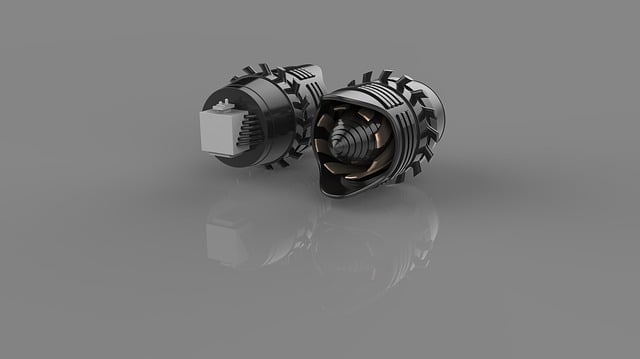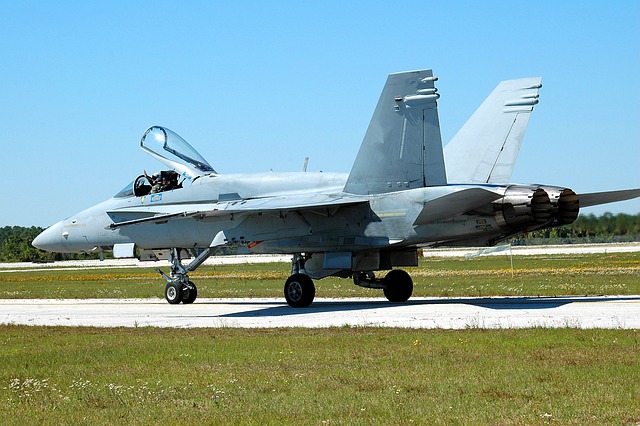Aerospace engineering is undergoing a transformation with the introduction of advanced materials that enhance safety and efficiency for high-speed flight, particularly at supersonic and hypersonic speeds. These materials, such as carbon fiber composites and ceramic matrix composites, offer a superior strength-to-weight ratio, reducing fuel consumption and emissions, and providing thermal and acoustic insulation against extreme temperatures. The industry is also focusing on environmental sustainability, with innovations in energy-efficient aircraft designs, lightweight materials to optimize energy use, and the development of hybrid and electric engines to lower aviation emissions and the carbon footprint. In space exploration, aerospace engineers are pioneering sustainable propulsion technologies like Hall-effect thrusters and ion drives for long-duration missions, utilizing solar panels with efficient photovoltaic cells, and exploring the use of biofuels and component recycling to minimize environmental impact. These efforts reflect a commitment to aligning aerospace advancements with global sustainability goals while opening new horizons in air and space travel.
In the realm of aerospace engineering, innovation continues to redefine the limits of human flight and space exploration. This article delves into the cutting-edge developments shaping the world’s fastest aircraft, showcasing how advanced materials, energy efficiency strategies, and propulsion innovations are collectively propelling us beyond our terrestrial confines. From the meticulous selection of high-performance materials that withstand the rigors of high-speed flight to the sophisticated design of propulsion systems aimed at space exploration, the aerospace sector is not just pushing boundaries—it’s transcending them. Join us as we explore the forefront of sustainable solutions in aerospace engineering and witness how these technologies are forging new paths in our quest to traverse the heavens with unprecedented speed and efficiency.
- Advanced Materials in Aerospace Engineering for High-Speed Flight
- Energy Efficiency Strategies in Aircraft Design
- Innovations in Aerospace Propulsion Systems for Space Exploration
Advanced Materials in Aerospace Engineering for High-Speed Flight

In the realm of aerospace engineering, the development and application of advanced materials have become pivotal in enabling high-speed flight capabilities. These materials are meticulously engineered to withstand extreme temperatures and pressures that accompany supersonic travel, ensuring the safety and efficiency of aircraft design. For instance, composite materials, such as carbon fiber reinforced polymers, are employed for their superior strength-to-weight ratio, which can significantly reduce fuel consumption and emissions. Additionally, these materials exhibit remarkable thermal and acoustic insulation properties, which are essential for maintaining structural integrity at hypersonic speeds where conventional materials would fail. The integration of advanced materials like ceramic matrix composites and high-temperature alloys in critical components such as the fuselage, wings, and engine parts is a testament to the ingenuity in aerospace engineering. These advancements are not only crucial for achieving unprecedented speeds but also for reducing the environmental impact of aerospace travel by optimizing energy use and minimizing noise pollution. As a result, the aerospace industry is pioneering new frontiers in material science to realize more sustainable high-speed flight solutions. The continuous research and development in this field promise to unlock further potentials, making space exploration more accessible and paving the way for a greener future in aviation.
Energy Efficiency Strategies in Aircraft Design

Aerospace engineering has been at the forefront of integrating energy efficiency strategies into aircraft design, a critical aspect as the world’s fastest aircraft push the boundaries of speed and performance. The quest for sustainable solutions in aerospace has led to the adoption of advanced materials that reduce weight without compromising strength, thereby improving fuel efficiency. These materials, such as carbon composites, are integral to designing lighter structures, which in turn decrease the energy required to propel the aircraft. Additionally, the optimization of aerodynamic shapes through computational fluid dynamics (CFD) and wind tunnel testing has been pivotal in streamlining aircraft design for reduced drag and enhanced fuel economy. Innovative propulsion systems, including hybrid and electric engines, are also being explored and tested to minimize emissions and carbon footprint. The integration of these technologies not only contributes to the reduction of fossil fuel consumption but also sets a new standard for sustainable air travel. Moreover, the implementation of energy-saving features such as winglet designs, more efficient engine fan designs, and improved avionics systems has further advanced the industry’s capabilities in creating eco-friendly aircraft. These strategic enhancements reflect the commitment of aerospace engineers to pioneer sustainable practices that align with the global imperative for greener technologies.
Innovations in Aerospace Propulsion Systems for Space Exploration

Engineers within the aerospace industry are continually innovating propulsion systems to push the boundaries of space exploration. These advancements are pivotal in enabling spacecraft to traverse vast distances with greater efficiency and reduced environmental impact. One significant area of research is the development of greener propulsion technologies that minimize fuel consumption and emissions. For instance, electric propulsion systems, such as Hall-effect thrusters and ion drives, offer higher specific impulse compared to traditional chemical engines, making them more sustainable for long-duration missions. These systems consume less energy per unit thrust, which translates to fewer launches required and a lower carbon footprint.
Moreover, the integration of renewable energy sources, such as solar panels with high-efficiency photovoltaic cells, into spacecraft design is another sustainable practice gaining traction. This integration not only reduces reliance on toxic propellants but also enables spacecraft to operate independently of Earth-bound power grids. Additionally, the use of biofuels and the recycling of propulsion system components are emerging as viable strategies to mitigate the environmental impacts associated with conventional rocketry. The synergy between these innovative approaches is setting a new trajectory for sustainable space exploration, demonstrating the aerospace industry’s commitment to safeguarding our planet while advancing human reach into the cosmos.
The aerospace sector is pioneering sustainable solutions that redefine high-speed flight and space exploration. By leveraging advanced materials, refining energy efficiency strategies, and innovating propulsion systems, the industry is pushing the envelope of what is possible. The world’s fastest aircraft, a testament to human ingenuity, will not only set new speed records but also pave the way for more sustainable space travel. These advancements ensure a future where aerospace endeavors coexist with environmental stewardship, heralding a new era of exploration and discovery.
